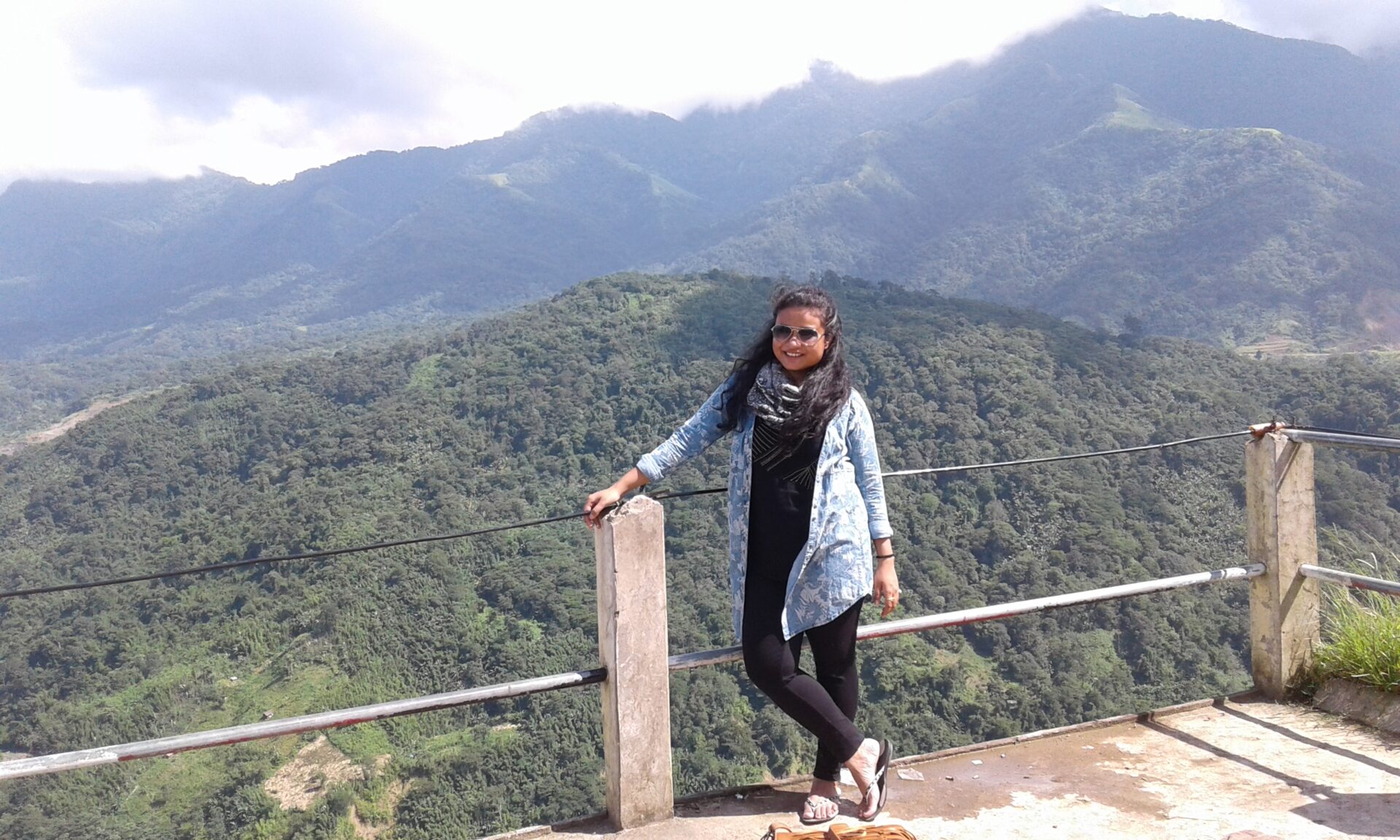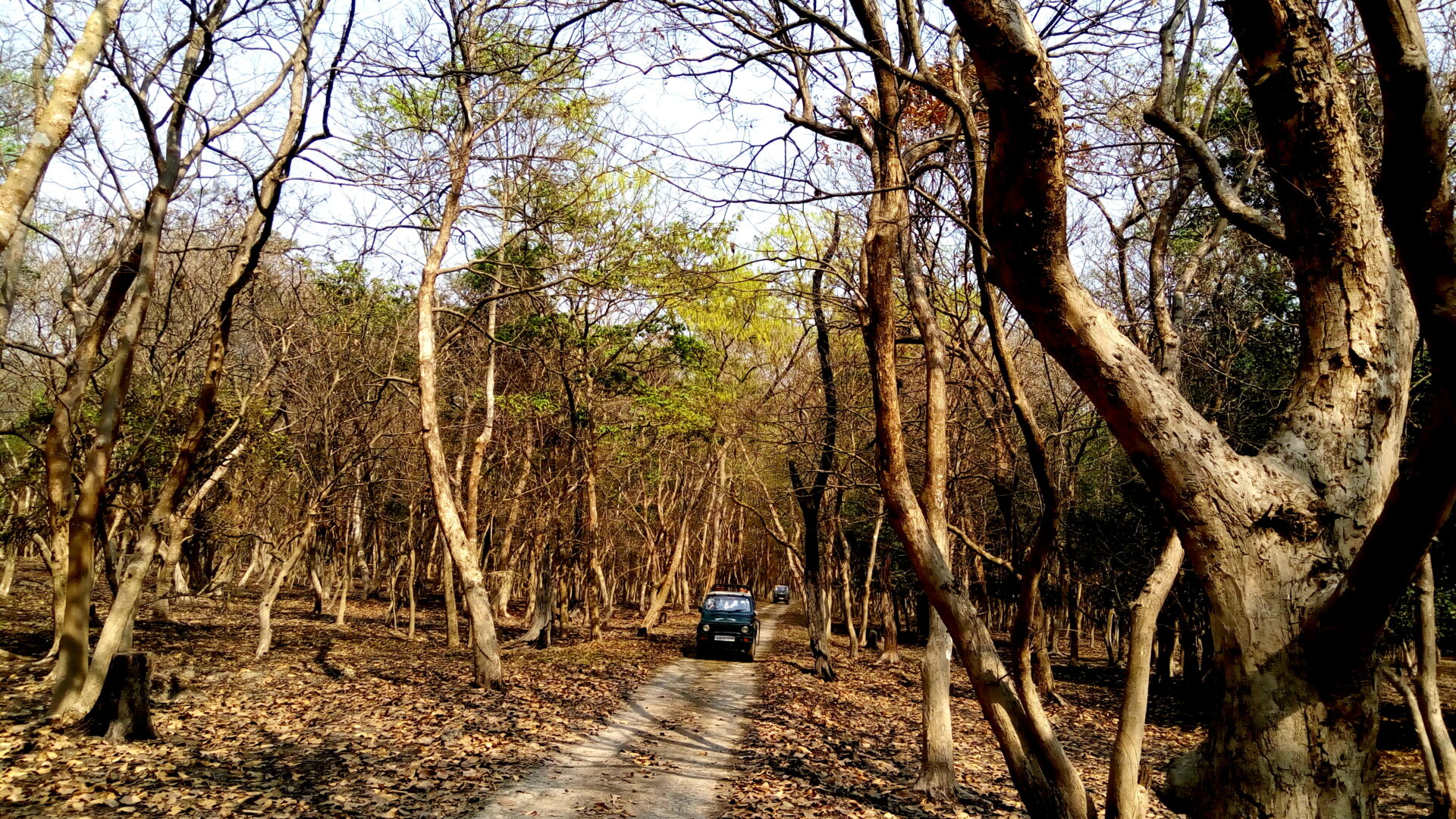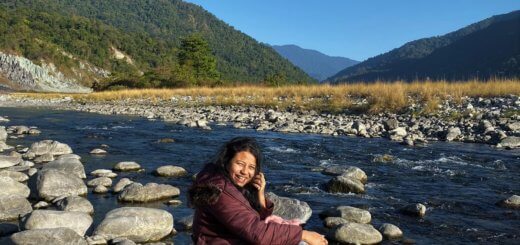Majuli Island Travel Guide – Everything You Need to Plan Your Trip
Majuli, the world’s largest river island, sits surrounded by the mighty Brahmaputra River. Tucked in the Northeast Indian state of Assam, it is home to numerous ethnic tribes of Assam. The confluence of rich heritage, folklore, craft, art, and co-existence of indigenous traditions emerges Majuli as a prime location from a cultural lens. Whether it’s preserving the decade-long neo-Vaishnavite culture of Assam, the uniqueness of handcrafted masks, or its geographical location – Majuli awaits its UNESCO World Heritage Site title.
PIN THE POST TO SAVE FOR LATER
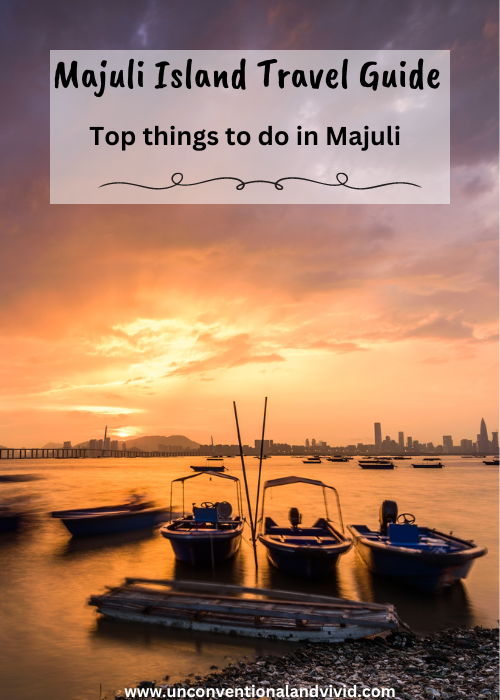

It’s been over five years since I visited the Majuli – the world’s largest river island across the mighty Brahmaputra River. The island district in the Northeast Indian State of Assam. From getting a glimpse of traditions and a peek into Assamese culture, this Majuli itinerary or travel guide will help you plan your trip.
Table of Contents
Neo-Vaishnavite Culture of Assam
Neo-Vaishnavite culture is unique to Assam and was spearheaded in the 15th – 16th century by Saint Shrimanta Sankardeva. The spread of Neo-Vaishanavisim revolutionized the cultural belief and laid a foundation for a progressive Assamese Society. The preaching focused on Ek-Saran Nama Dharma, accepting disciplines of all castes and tribes. Vaishanavisim believed in Lord Vishnu as the supreme God. The teachings brought democratized reforms by uplifting backward classes and blurring the existing caste distinctions.
With the spread of Neo-Vaishanavisim, a new era of cultural synthesis spread like wildfire across Assam. There was a massive emphasis on building a caste-ridden society. The focus was reforming social behaviour, working on personal cleanliness, and promoting social harmony. All the tribes embraced the veritable movement. It also brought a wave of cultural renaissance, including introducing art and music, dance, and theatres. Today, Majuli continues to be the seat of Neo-Vaishnavite culture and tradition.
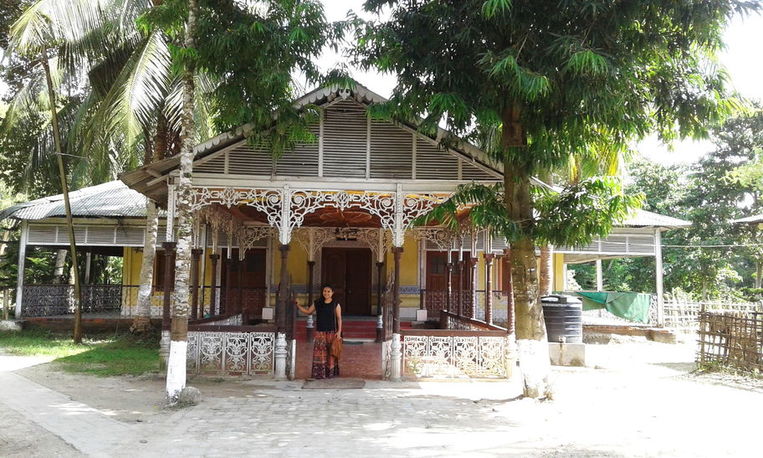
Satras – Neo-Vaishnavite Monasteries of Majuli
When you plan a trip to Majuli, you cannot miss visiting the Vaishnavite monasteries – SATRAS. Unique to Assamese cultures, Satras clusters as a place of worship and center for traditional performing art and culture. The head of the Satra, also known as Satradhikar, performs religious rituals and ceremonies. In Assamese Society eve,ry Satra has a place of worship known as Namghar. Besides being a place of prayer, Namghar hosts traditional dramatic performances (Bhaonas), devotional songs (Borgeets), and prayer chanting.
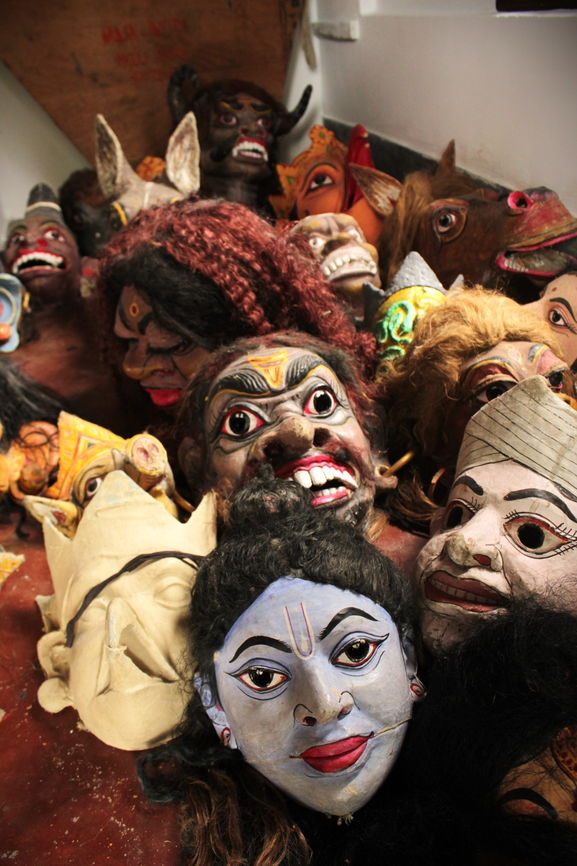
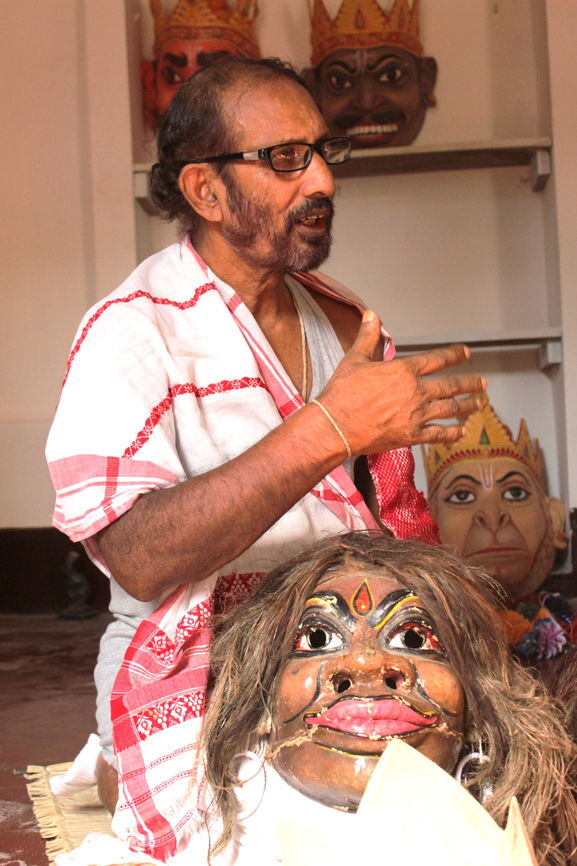
Here are the must-visit Satras of Majuli Island:
Samaguri Satra
Samaguri is known for keeping the famous and traditional mask-making art of Assam alive. Masks, also known as Mukha (in Assamese), are a solid historical significance pillar. The mask depicts characters from Ramayan and Mahabharat and is often used in Assamese plays known as Bhoanas. The indigenous art of mask-making in Majuli is preserved and passed on to the younger generations by Hem Chandra Goswami (Satradhikari of Samaguri Satra). The masks are made of sustainable and natural materials like bamboo and cow dung and painted with natural plant-based dye. There is a workshop and small shop next to the Satra where students learn mask-making under the guidance of master craftsman Hem Chandra Goswami.
Dakhinpat Satra
Surrounded by paddy fields along the northern bank of the Brahmaputra River, Dakhinpat Satra bestows the utmost serenity to the visitors. Unlike Samaguri Satra, Dakhinpat Satra and Auniati Satra are monasteries for only bachelors. While on the campus of Dakhinpat Satra, take advantage of the stunning murals, each depicting a story. It is famous for organizing its annual Raas Festival.
Auniati Satra
Auniati Satra stands as a strong pillar for Assamese Satriya Culture. It was established in the 16th century by Ahom King Sutamla, with Sri Sri Niranjan Deva as the first Satradhikar. The place has been an epicentre for cultural performances like Bhaonas, Satriya dance, and religious preachings. Satriya’s performance includes dance and theatrical representation based on Puranas, Vedas, Ramayana, Mahabharat, Bhagwat Gita, etc.
Garamur Satra
One of the four royal Satras of Majuli Island, Garamur Satra, was founded in the 16th century by Sri Sri Lakshmi Narayan Dev. With its patronization by kings, it became one of the most affluent Satras of Assam. Until 1915, devotees and residents were not allowed to marry. However, the late Satradhikar in Pitambardeva Goswami abolished this practice in 1915, and residents were allowed to marry.
Other Satras you can visit in Majuli include Kamalabari Satra and Bengenaati Satra. Each has its cultural representation and history.
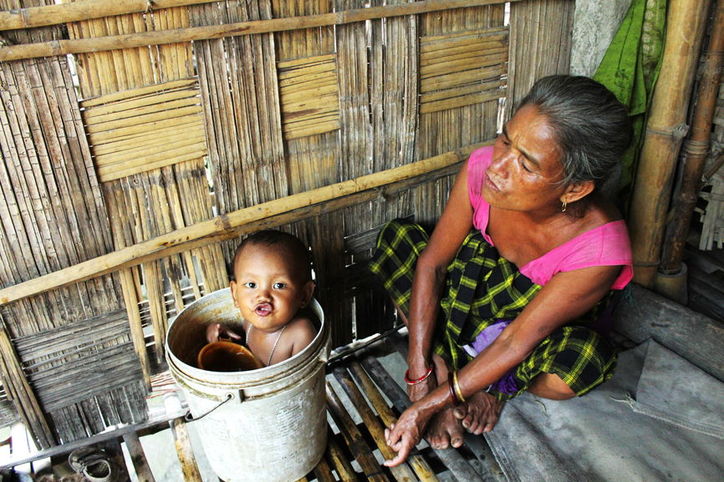
Who are the Ethnic Tribes of Majuli Island?
The indigenous tribes and their unique heritage preserved through decades make them unique. The harmonious co-existence of tribal and non-tribal communities makes the island district a fascinating cultural melting point. Apart from being the hub of neo-Vaishnavite culture, Majuli is inhabited by Misings, Deoris, and Sonowal-Kacharis. The non-tribal Assamese communities include Koch Rajbanshis, Kalitas, Ahoms, Keots, Kayasthas etc. Mishing community, also the largest population in Majuli Island, originally immigrated from Arunachal Pradesh.
Also, read about Bodo Tribes – Ethnic tribes of Assam, majorly locals of Bodoland, Assam.
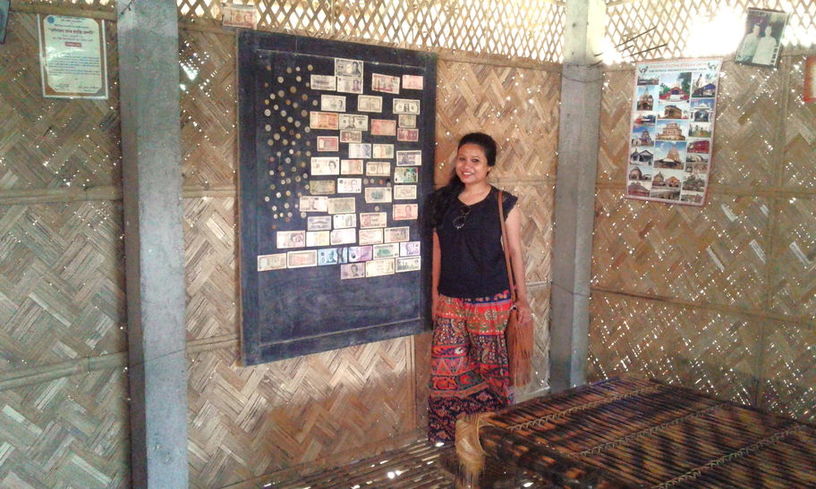
Experiences and Things to Do in Majuli Island
Make your Majuli Island tour memorable by exploring beyond Satras. Walk around ethnic villages to get acquainted with people and their culture at the grassroots level. Whether it’s the Mishing villages or getting to know more about Namghars, the towns in Majuli have preserved the traditions. Here are some of the villages you can visit:
- Visit the picturesque Pathorichuk Village – Stroll there if the countryside inspires you. Cross rickety bamboo bridges, take a boat ride, and reach the village to enjoy an afternoon in this remote village.
- Learn the art of earthen pottery making in Salmora – Visit this quaint village to learn more about earthen pots. The village is located on the South-East bank of the Brahmaputra River and is known for its unique mud soil enriched with minerals. Pottery makers are known as Kumars and use the soil (Kumar Mati) to make earthen pots. However, the continuous soil erosion makes procurement of raw materials expensive, and the prospects of traditional pottery making in Majuli stand dangling.
- Take a walk around the Mishing Villages to learn more about the culture. It is best to consult your accommodation owner about the fringe villages. If possible, take a sip of Apong – a local rice beer (be careful not to gulp it down in one go).

- Try authentic ethnic cuisine in Majuli Island. If you are a non-vegetarian, you will genuinely experience Majuli’s culinary delights. The last time I visited Majuli Island, I tried the tribal food Thali at Risong’s Kitchen. The thali usually includes ethnic food like fish/chicken curry, potato dia maas (fish wrapped in a leaf and cooked/steamed), chicken khorika (roasted chicken on a bamboo skewer), and fresh leafy veggies. You can also try authentic Missing food like Pamnam chicken or fish (baked in banana leaf) and massing (dry fish chutney). Also, if you fancy some alcoholic beverages, try Apong, an indigenous rice beer. Eating at Risong’s kitchen is not only about experiencing a Mishing-style kitchen set up in a Chang Ghor (bamboo houses on stilts).
- Attend the Raas Mahotsav in Majuli—One of the best times to visit Majuli is during Raas Mahotsav. The annual festival is usually celebrated in November. It’s organized in the Satras by playing Bhaonas, which are usually dance dramas where people wear traditional face masks and depict characters from the Ramayana and Mahabharat. Also, witness Raas Leela—plays that show the life of Lord Krishna through performing art.
- Majuli has some of the best sunsets and sunrises, so don’t miss them. Sit by the bank of the River Brahmaputra to witness the setting sun. As the fishermen come back rowing their country boats, sit by the best sunset points in Majuli and enjoy the glorious colours.
- Visit a Namghar—the community praying hall—to learn more about Assamese culture and religious beliefs and engage in Naam Kirtan (prayer).
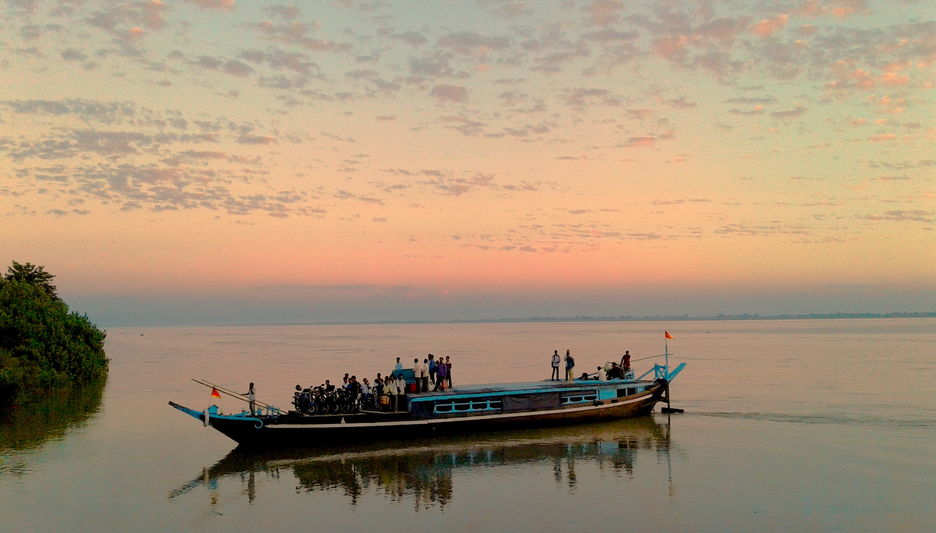
How to Reach Majuli Island?
While it is mistaken that Majuli is isolated and can only be reached by ferry, it’s not true, although the ferry is the easiest and quickest way. Here’s how you can travel to Majuli:
- By Ferry – Majuli is well connected to Jorhat and Lakhimpur by ferry. The most convenient way to reach Majuli is by boarding a ferry from Nimati Ghat, which is almost 15 – 16 km from Jorhat. Take a direct train or bus to Jorhat, followed by an auto to Nimati Ghat. Also, it is the most affordable way to travel to Majuli Island.
- By Road – It’s no surprise that many people don’t know there is road connectivity. Majuli can be reached by road from Lakhimpur via Dhakuakhana.
Note: Also, you can carry bikes, cars, and extra loads on the ferry by paying extra fees.
Where to Stay in Majuli Island?
I highly recommend staying at Risong Family Guest House for that authentic feel. Stay in a traditional Bamboo cottage (Chang Ghor) and experience the local culture. However, if you like something a little concrete, stay at Enchanting Majuli. You can hire a bicycle to go around the places, rent a bike, or opt for a taxi.
If you are planning a trip to Assam, read the blogs to plan your trip. Read here

